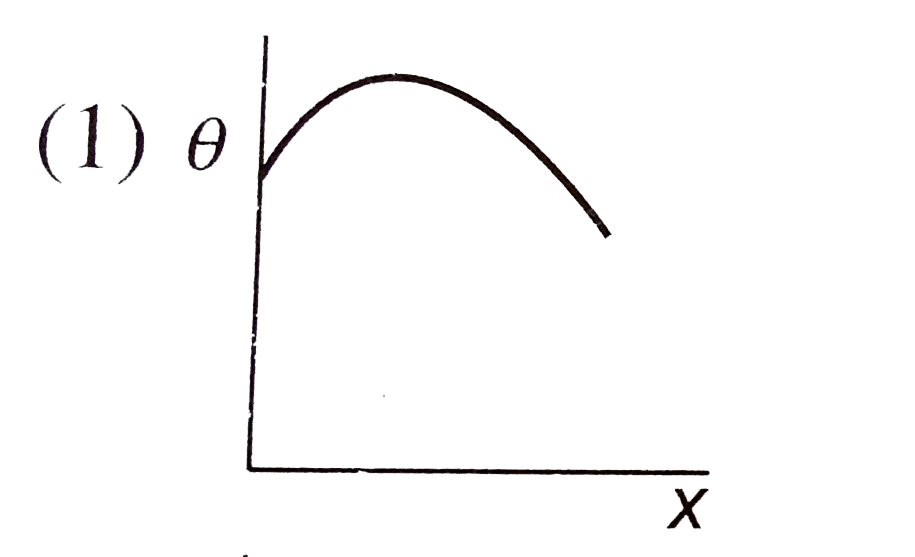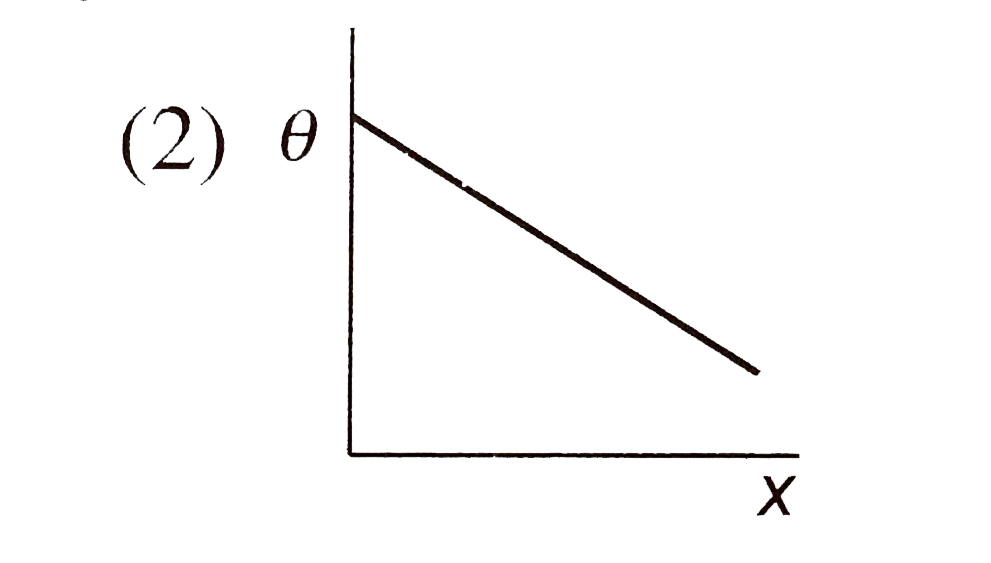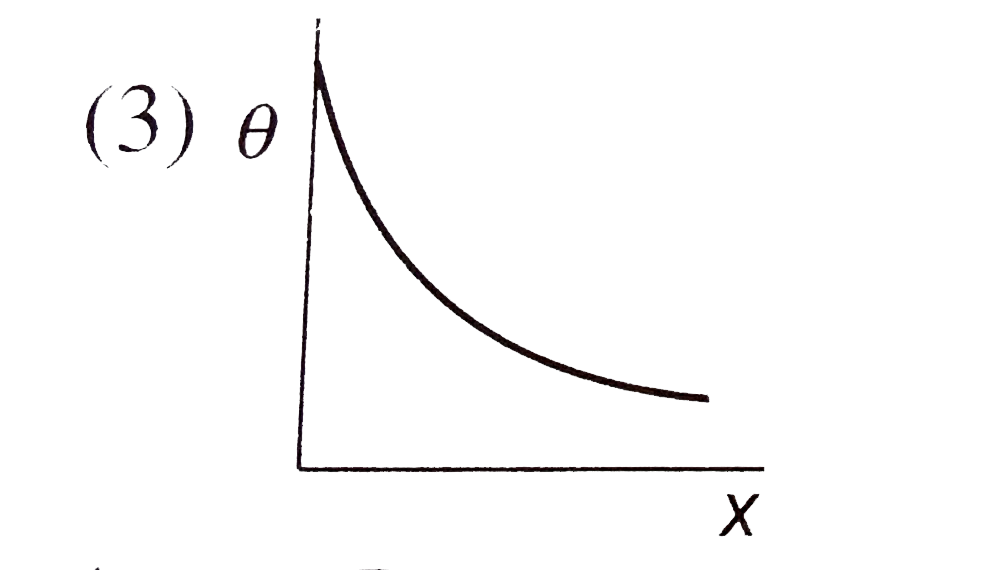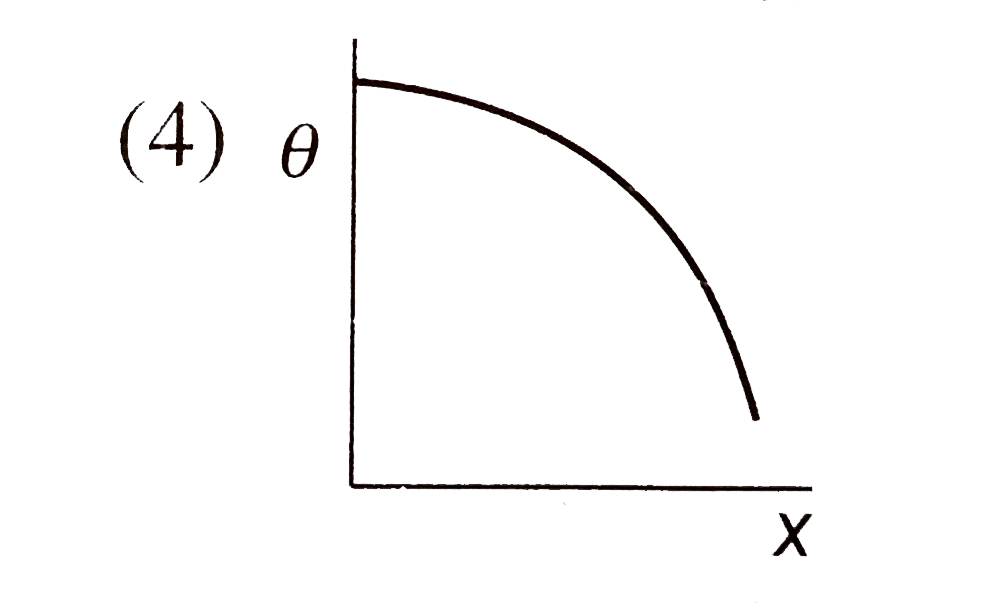A long metallic bar is carrying heat from one of its ends to the other end under steady-state. The variation of temperature θ along the length x of the bar from its hot end is best described by which of the following figures?




The correct Answer is:B
(2) θ1−θ2L=θ1−θx
θ=−(θ1−θ2L)x+θ1
θv/sx is a straight line with negative slopw and positive intercept.

Similar Questions
One end of a 600 cm long steel bar is fixed rigidly and the other end rests on a lever, 10 cm away from its fulcrum. The lever turns through 2∘ when the bar is heated up to 50∘C. Find the increase in length of the bar and its coefficient of linear expansion.
View SolutionThe ends of a thin bar are maintained at different temperatures. The temperature of the cooler end is 11∘C , while the temperature at a point 0.13m from the cooler end is 23∘C and the temperature of the warmer end is 48∘C. Assuming that heat flows only along the length of the bar ( the sides are insulated), find the length of the bar.
View SolutionIn thermal steady state of rod, temperature gradient is 5∘ C/cm and temperature of its hot end is 100∘C, then at . . . . . . cm distance from hot end its temperature becomes 60∘C.
View SolutionA long metallic bar is carrying heat from one of its ends to the other end under steady-state. The variation of temperature theta along the length x of the bar from its hot end is best described by which of the following figures?
View SolutionThe ends of an well-lagged copper bar of length L are held at steady temperature theta_(1)andtheta_(2)(theta_(1)gttheta_(2)) Which graph best represents the relationship between dQ/dt, the rate of flow of heat, and x, the distance from the hot end when all temperatures in the bar are steady ?
View SolutionA long metallic bar is carrying heat from one of its ends to the other end under steady-state. The varitatin of temperature θ along the length x of the bar from its hot end is best described by which of the following graphs :
View SolutionA metal bar of length l is well lagged with some non-conducting material to prevent loss of heat from its surface and the two ends are maintained at steady temperatures θ1 and θ2(θ1>θ2), then in steady state the temperature θ of the section of the bar at a distance x from the hot end varies according to which figure ?
View SolutionThe ends of an well-lagged copper bar of length L are held at steady temperature θ1andθ2(θ1>θ2) . Which graph best represents the relationship between dQ/dt, the rate of flow of heat, and x, the distance from the hot end when all temperatures in the bar are steady ?
View Solution

